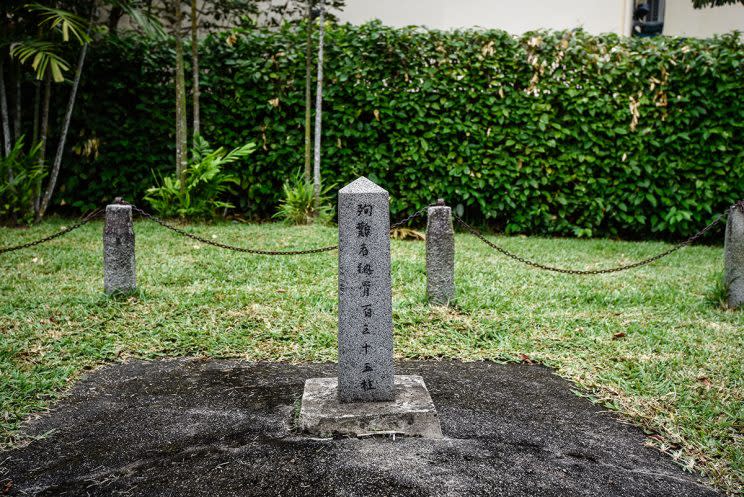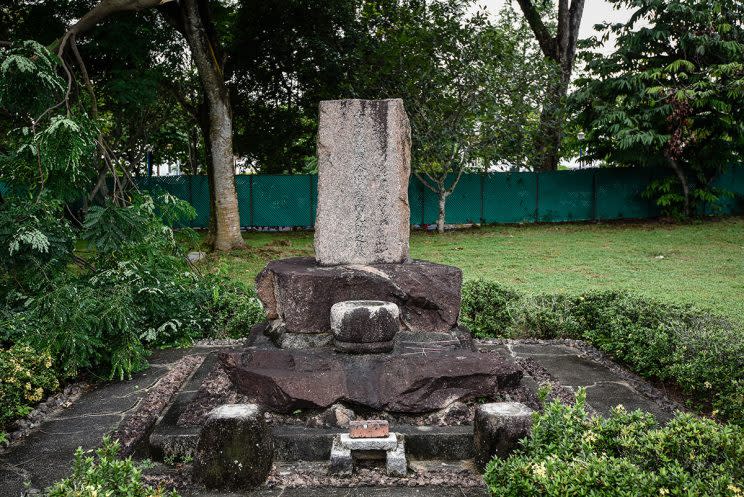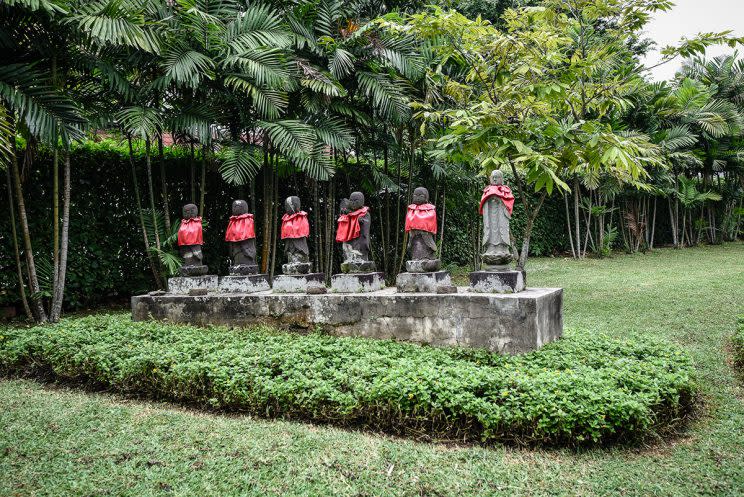COMMENT: Should the ashes of Japanese war criminals in Singapore cemetery be removed?

In a tranquil neighbourhood near Hougang lies a 126-year-old cemetery with a grim past etched on a granite pillar. Measuring less than a metre in height, the pillar marks the final resting place of 135 Japanese war criminals.
These war criminals were executed in the former Changi Prison for committing atrocities in Singapore during World War II, such as the Sook Ching Massacre. Their ashes ended up being buried in the Japanese Cemetery Park at 825B Chuan Hoe Avenue, with the memorial for them paid for by the Japanese government in 1955. The Japanese inscription on the pillar describes them as martyrs.
Another pillar at the park marks the burial spot of 79 Japanese war criminals who were hanged in then Malaya. A separate memorial contains the ashes of 10,000 Japanese war dead collected from two bygone Shinto shrines in Bukit Batok and MacRitchie.
At the other end of the park is the tombstone of the most senior-ranking Japanese commander who fought in the Southeast Asia theatre of war. Field Marshal Count Hisaichi Terauchi, the Supreme Commander of the Japanese Expeditionary Forces in the Southern Area, also happened to be a suspected war criminal. Terauchi died in Johor in 1946 while the British were still investigating his alleged war crimes.

On any given day, a small number of mostly Japanese tourists and Singaporeans would visit the park to place flowers and burn joss sticks for the dead.
The continuous presence of the ashes of war criminals over the decades at the cemetery, declared as a memorial park by the Singapore government in 1987, is perplexing. With the 30-year lease of the park ending in 2019, there should be a discussion about the future fate of the ashes.
Should the ashes be repatriated back to Japan for reburial? Another option can be gleaned from the immediate period after the war, when there were intense debates among British officials over what would happen to the ashes of Japanese war criminals. According to one source, the authorities in Singapore sometimes would burn the corpses of war criminals and dispose the ashes at sea to prevent them from being honoured at a gravesite.
The repatriation of the remains of Japanese war criminals would be consistent with a longstanding policy of the Japanese government. Addressing both houses of the Japanese parliament in February 2015, Prime Minister Shinzo Abe said, “I will work to ensure that the remains of Japanese soldiers, many of whom still remain resting in other countries, are repatriated as quickly as possible.”

The Syonan Gallery debacle
The park is not just a burial ground for Japanese soldiers and war criminals. Built in 1891 by three Japanese brothel owners, the cemetery was originally populated by the remains of mostly young Japanese prostitutes working in Singapore. It also houses the remains of Japanese civilians who had lived here. In all, there are 910 tombstones at the park, which spans about 30,000 square metres.
Nonetheless, it is the military aspect of the park that is controversial. The majority of Singaporeans today may not be able to relate to the harsh realities of life under the Japanese Occupation but for wartime survivors, the wounds still run deep.
In February, the Singapore authorities unveiled a new exhibition called Syonan Gallery: War and its Legacies at the former Ford Factory, where the British forces surrendered to the Japanese on 15 February 1942. The exhibition’s name was in reference to the renaming of Singapore to Syonan-to by the occupying Japanese forces.
Many Singaporeans, including civilian survivors of the war, protested against the name given the anguish and suffering of the country’s wartime generation. The controversy prompted the exhibition to be renamed Surviving the Japanese Occupation: War and its Legacies. Minister for Communications and Information Yaacob Ibrahim did the right thing by apologising to Singaporeans about the original naming just two days after the launch of the exhibition.
Puteh Mahamood was just 11 years old when Singapore fell to the Japanese. Speaking to Yahoo News Singapore in Malay recently, Puteh said he had to stop schooling to support his family and life was hard under the “heartless” Japanese military authorities.
One day, a boy stole from a store that Puteh was working at, and was captured by Japanese soldiers. The boy was taken away to the old YMCA building, where the headquarters of the Japanese secret police Kempeitei were located, and was never heard from again, Puteh said.
When told about the burial spot of the war criminals at the park, Puteh, now 86, expressed surprise that it exists. “The war criminals’ ashes should be brought back to Japan for reburial so that their souls can rest in peace,” he said.

A war memorial service at the park?
Kazuo Sugino, the former Secretary-General of the Japanese Association of Singapore, which has been managing the park since 1969, said the Singapore government has agreed in principle to a lease extension.
In an interview with Yahoo News Singapore on Monday (17 July), Sugino claimed that most of the ashes of the war criminals had been sent back to Japan many years ago. While Sugino acknowledged the “sensitive nature” of the military memorials, he stressed that the park’s history should not be overshadowed by what happened during the war.
“The cemetery is not just for the military dead. The majority are (the remains of) civilians. The Japanese community’s history is reflected at the park. We feel it is important to learn about it,” Sugino said.
Yahoo News Singapore has sent queries about the status of the cemetery as a memorial park to the National Heritage Board and has yet to receive a reply on the park’s status and the agency in charge.
If the Singapore authorities were to formally agree to the lease extension and the ashes of the war criminals remaining at the park, the Japanese community can consider commemorating the occupation years, in part as a sign of appreciation for the park’s continuous presence.
A memorial panel can be erected at the park to chronicle the war crimes committed by Japanese soldiers in Singapore. This is pertinent as many visitors to the park are Japanese, whose post-war governments have angered several Asian countries over the decades for their repeated attempts to whitewash Japan’s wartime history.
Past commemoration services to mark the Fall of Singapore were typically held annually at the Civilian War Memorial and the Kranji War Memorial in remembrance of the civilians and Allied military personnel, respectively, who lost their lives during the war. Crucially, these services overlooked the poignant symbolism of the belligerent that started the war. As such, a similar service can also be held at the park every 15 February to hope for peace to be sustained in Singapore and the broader region.
The erstwhile Syonan Gallery triggered a fierce national debate about the Japanese Occupation over a name. But an even more potent symbol of the brutal occupation, in the form of the ashes of war criminals, merits a separate discussion among Singaporeans, the Japanese community and the authorities.
An extension of the lease of the park beyond 2019 would exemplify the postwar spirit of reconciliation between Singapore and Japan. Such a decision, however, should not be undertaken at the expense of educating the current and future generations of Singaporeans and the Japanese people about the war at the very burial spot of the fallen who were part of an invasion force responsible for the deaths of as many as 50,000 civilians in Singapore.
– translation of interview with Puteh Mahamood by Safhras Khan


